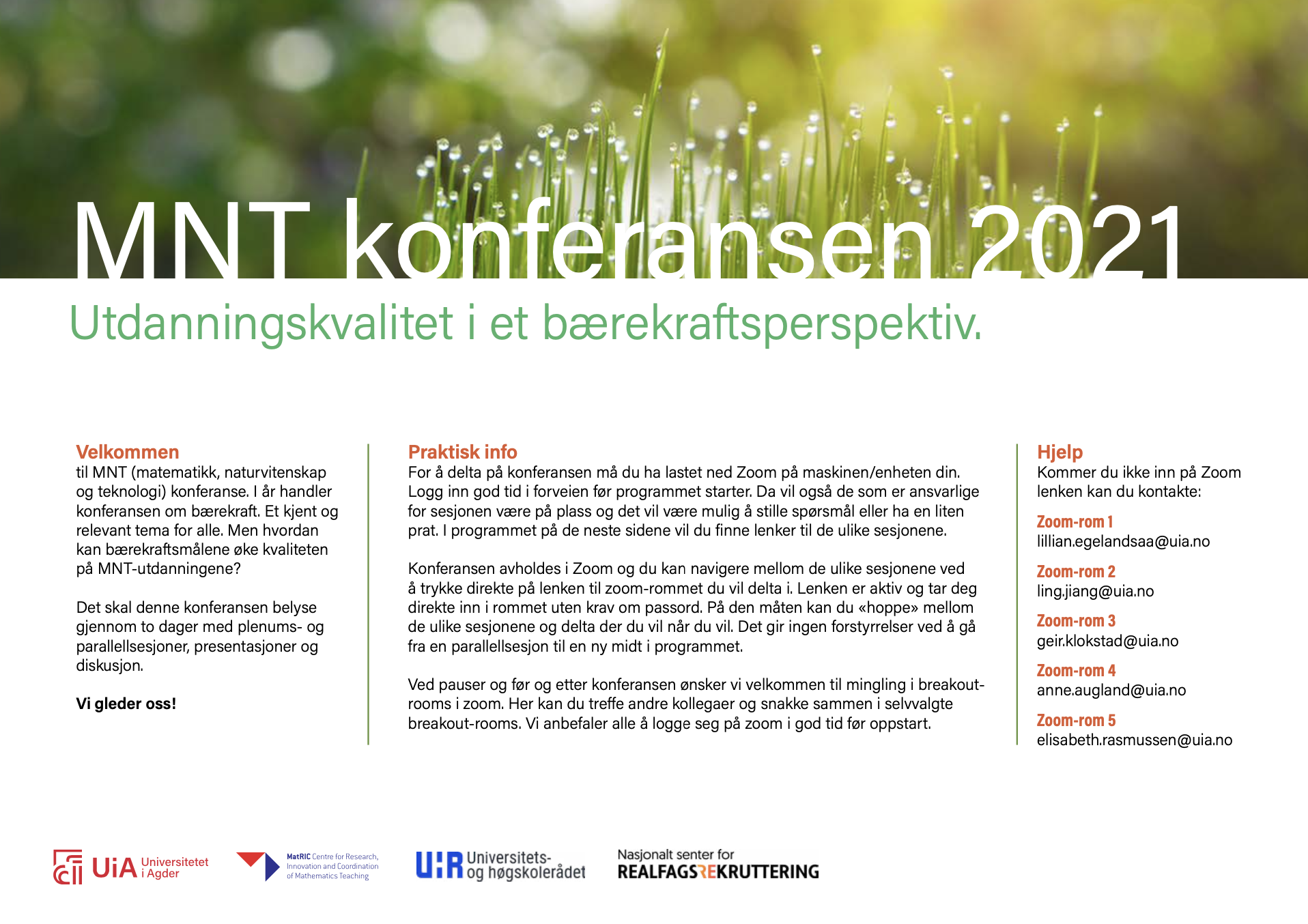Praksis som læringsform i studier uten profesjonstilknytning – utfordringer og muligheter
DOI:
https://doi.org/10.5324/njsteme.v5i1.3988Resumé
Hvilke muligheter og utfordringer kan oppstå med praksis som læringsform i utdanninger som ikke er spesifikt profesjonsrettet? I profesjonsutdanninger deler praksisvirksomhetene og utdanningsinstitusjonene ofte en felles forståelse av hva som skal oppnås i praksis, mens i ikke-profesjonsrettede studieløp er det andre utfordringer. I et nylig oppstartet prosjekt som heter «Samarbeid om praksis i høyere utdanning» har vi som formål å videreutvikle praksisopplegget på det tverrfaglige bachelorprogrammet i fiskeri- og havbruksvitenskap ved Norges fiskerihøgskole, UiT, som har et sterkt innslag av realfag. En særlig utfordring er å utvikle felles læringsmål når studentene er ute i ulike praksisbedrifter. Etter noen år med praksis som et pilotprosjekt, er konklusjonen at praksis er en god læringsform, men at det er behov for utvikling av tydelige læringsutbyttebeskrivelser, nye vurderingsformer, forventningsavklaringer fra alle parter, og veiledning og opplæring for praksisveiledere.
Downloads
Downloads
Publiceret
Citation/Eksport
Nummer
Sektion
Licens
Copyright (c) 2021 Bjørn-Petter Finstad, Ragnhild Sandvoll, Ingrid Hovda Lien

Dette værk er under følgende licens Creative Commons Navngivelse (by).
The Nordic Journal of STEM Education licenses all content of the journal under a Creative Commons Attribution (CC-BY) licence. This means, among other things, that anyone is free to copy and distribute the content, as long as they give proper credit to the author(s) and the journal. For further information, see Creative Commons website for human readable or lawyer readable versions.
Authors who publish with this journal agree to the following terms:
1. Authors retain copyright and grant the journal right of first publication with the work simultaneously licensed under a Creative Commons Attribution License that allows others to share the work with an acknowledgement of the work's authorship and initial publication in this journal.
2. Authors are able to enter into separate, additional contractual arrangements for the non-exclusive distribution of the journal's published version of the work (e.g., post it to an institutional repository or publish it in a book), with an acknowledgement of its initial publication in this journal.
3. Authors are permitted and encouraged to post their work online (e.g., in institutional repositories or on their website) prior to and during the submission process, as it can lead to productive exchanges, as well as earlier and greater citation of published work (See The Effect of Open Access

